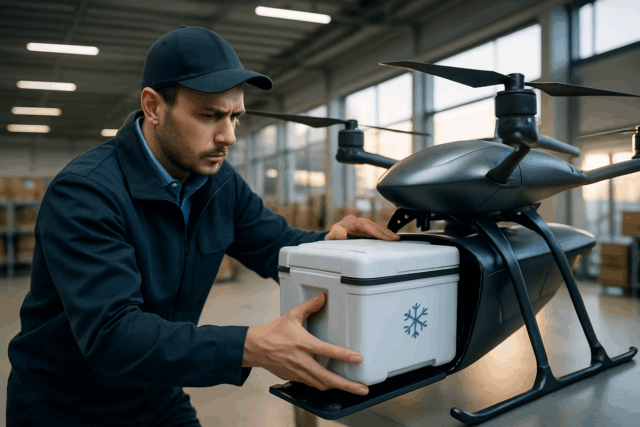The burgeoning integration of Unmanned Aerial Vehicles (UAVs), commonly known as drones, into modern security operations has revolutionized surveillance, monitoring, and threat detection capabilities. These airborne platforms capture vast amounts of data, from high-resolution imagery and video to thermal and LiDAR scans. However, the true value of drone deployment in security contexts lies not just in data collection, but in the meticulous analysis and secure management of that data. Ensuring the integrity, confidentiality, and utility of this information requires adherence to stringent best practices across the entire data lifecycle.
The Pivotal Role of Drones in Modern Security
Drones have become indispensable tools for law enforcement, critical infrastructure protection, border patrol, and event security, offering a bird’s-eye perspective that enhances situational awareness and reduces human risk. Their ability to provide continuous monitoring and access hard-to-reach areas makes them highly effective for identifying potential threats, assessing emergency scenarios, and conducting reconnaissance. However, this advanced capability comes with the critical responsibility of managing the sensitive data they collect.
Strategic Planning and Pre-Collection Considerations
Effective drone data analysis in security contexts begins long before a drone takes flight. Comprehensive planning is paramount to ensure data is collected purposefully, legally, and ethically.
Defining Objectives and Data Requirements
Clearly define the security objectives for each mission. What specific threats are being monitored? What information is needed to mitigate them? This guides the type of sensors required (e.g., optical, thermal, LiDAR), flight patterns, and desired data resolution. Unnecessary data collection increases storage burden and potential privacy risks.
Legal and Ethical Frameworks
Navigating the complex legal and ethical landscape of drone surveillance is crucial. Operators must ensure compliance with national, regional, and industry-specific regulations, such as FAA rules in the US, EASA in Europe, and data protection laws like GDPR. Key considerations include:
- Privacy Rights: Drones can capture sensitive information about individuals and properties, often without explicit consent, raising significant privacy concerns. Adhering to principles of data minimization—collecting only what is necessary—is vital.
- Public Perception: Misuse or perceived misuse of drones can erode public trust. Transparency about drone operations and robust privacy policies are essential.
- Consent and Transparency: Obtaining informed consent when possible and being transparent about data collection purposes are critical ethical considerations.
Best Practices for Secure Data Collection
The moment a drone’s sensors activate, data security becomes a live concern. Protecting data in transit and at rest on the drone itself is fundamental.
Secure Communication Protocols
All communications between the drone and the Ground Control Station (GCS) – including video feeds, GPS coordinates, and control commands – must be encrypted. Robust protocols like AES-256, TLS, SSH, or VPNs are recommended to prevent interception and hijacking. Using different encryption keys for control, telemetry, and payload transmissions adds layers of security.
Onboard Data Protection
Data stored directly on the drone, such as on SD cards or internal memory, should be encrypted. Features like password protection for onboard storage and regular erasure of personal data after each use are crucial. Some manufacturers, like DJI, offer “Local Data Mode” (LDM) to prevent data from being transmitted or shared externally, along with AES-256 video transmission encryption and one-tap data clearing.
Effective Data Processing and Management
Once collected, drone data must be securely processed, stored, and managed to extract actionable insights while maintaining its integrity and confidentiality.
Robust Data Storage Solutions
Drone operations generate massive datasets (e.g., LiDAR scans, 3D models, thermal imagery), requiring sophisticated storage solutions.
- Encryption at Rest: All sensitive drone data, whether stored on local servers or in cloud environments, must be encrypted using strong standards like AES-256. Encryption keys should be managed separately from the encrypted data.
- Cloud vs. On-Site vs. Hybrid: Cloud storage offers scalability, automatic backups, and geographic redundancy, often with advanced security measures like encryption and access controls, and compliance with standards like SOC2 Type II and ISO27001. On-site storage provides faster local access and full control but requires more maintenance and has limited scalability. Hybrid systems combine the benefits of both.
- Data Retention Policies: Establish clear data retention policies to comply with regulations and minimize the risk associated with storing old, unnecessary data.
- Separate Storage: Storing flight data separately from manufacturer’s native flight logs can enhance privacy and security.
Access Control and Authentication
Implement strict access controls, including Multi-Factor Authentication (MFA) and Role-Based Access Control (RBAC), to ensure that only authorized personnel can access sensitive drone data and systems. Default passwords should always be changed to strong, unique ones.
Data Processing Software
Specialized drone analytics software is essential to process, analyze, and interpret raw drone data, turning it into valuable insights. Key features to look for in software include:
- Automated flight planning and data capture.
- Image processing, 2D/3D modeling, and mapping.
- AI-powered data interpretation and anomaly detection.
- Secure data management with encryption and access controls.
- Examples of such platforms include DroneDeploy, Pix4D, DJI Terra, and Optelos.
Advanced Analysis Techniques for Security Insights
The real power of drone data emerges through sophisticated analysis, often leveraging Artificial Intelligence (AI) and Machine Learning (ML).
AI-Powered Object Detection and Recognition
AI algorithms can analyze vast amounts of real-time or stored video and image data to differentiate, categorize, and identify objects, individuals, and even specific patterns of behavior. This is critical for:
- Threat Detection: Identifying unauthorized drones (anti-drone systems), suspicious vehicles, or individuals in restricted areas.
- Anomaly Detection: Recognizing subtle deviations from normal behavior or patterns that could indicate a security risk.
- Facial Recognition: Advanced AI models can identify individuals from drone feeds, assisting in suspect tracking or VIP protection, though this raises significant ethical and privacy concerns.
Geospatial Analysis and Mapping
Drone data, especially from LiDAR and photogrammetry, enables the creation of highly accurate 2D orthomosaic maps and 3D models. This data can be used for:
- Perimeter Security: Creating detailed maps of large areas or critical infrastructure for monitoring changes and identifying vulnerabilities.
- Damage Assessment: Post-incident analysis to assess damage and plan response efforts.
- Volumetric Calculations: Useful in monitoring stockpiles or construction progress in secure facilities.
Real-Time Monitoring and Alerts
Integrating AI-driven analysis with real-time video feeds allows for immediate assessment and response to security incidents. Systems can send instant alerts for potential threats, enabling security personnel to act quickly and decisively.
Data Interpretation, Reporting, and Actionable Insights
Raw data and analytical outputs are only valuable if they can be understood and acted upon.
Clear and Concise Reporting
Security reports derived from drone data must be clear, concise, and highlight actionable insights. Visualizations, such as annotated maps, 3D models, and video clips, can significantly enhance understanding.
Integration with Security Systems
For maximum effectiveness, drone data analysis should integrate seamlessly with existing security management systems, command centers, and incident response protocols. This ensures a unified operational picture and streamlined decision-making.
Continuous Security Audits and Compliance
Maintaining robust security for drone data is an ongoing process that requires continuous vigilance and adaptation.
Regular Security Assessments
Conduct regular security assessments, including penetration testing, vulnerability scans, and compliance audits, to identify and address potential weaknesses. This should cover both hardware and software components of the drone system.
Firmware and Software Updates
Regularly update drone firmware and software to patch known vulnerabilities and ensure systems are protected against evolving threats. Downloading software only from authenticated and secure vendor websites is also recommended.
Incident Response Plan
Develop a clear incident response plan for data breaches or drone compromises. Knowing how to report incidents, such as network intrusions or data breaches, to relevant authorities like the FBI or CISA, is essential.
Challenges and Future Trends in Drone Data Security
The landscape of drone data analysis in security contexts is dynamic, presenting both challenges and exciting future possibilities.
Evolving Threats and Countermeasures
Drones are susceptible to cyber threats, including GPS spoofing, command-and-control hijacking, data interception, and malware injection. The cybersecurity market for drones is growing rapidly, with increased adoption of AI-powered cybersecurity systems for real-time threat detection and counter-drone technologies.
AI and Machine Learning Advancements
The capabilities of AI and ML in drone security are continuously improving. Deep learning algorithms are enhancing detection accuracy, enabling real-time processing, and allowing for automated threat assessment by analyzing drone type, payload, and flight path. Future advancements may include the use of Large Language Models (LLMs) to identify anomalies and generate emergency response strategies.
Regulatory Evolution
As drone technology and its applications in security advance, regulatory frameworks will continue to evolve, seeking to balance innovation with privacy rights and public safety. Staying abreast of these changes is critical for compliance.
Conclusion
The effective and secure analysis of drone data is paramount for unlocking the full potential of UAVs in security contexts. From meticulous pre-flight planning and secure data collection to advanced AI-powered analysis and vigilant data protection, each step requires dedicated attention to best practices. By prioritizing robust encryption, stringent access controls, ethical considerations, and continuous security assessments, organizations can leverage drone technology to enhance surveillance, detect threats, and make informed decisions, ultimately bolstering overall security posture while safeguarding sensitive information.





